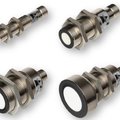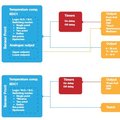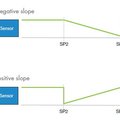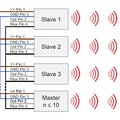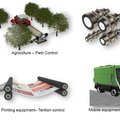- Wago Products
- Cabur Products
-
Cembre Products
-
Tube terminals - End sleeves
-
Ring - Fork - Pin - Blade terminals
-
Slide cable lug
-
Tube connectors
-
Copper tube crimp lugs
-
Copper single-hole terminal lug for circuit beakers
-
Crimping through/sleeve connectors
-
Aluminum tube crimp lugs
-
Bimetallic tube crimp lugs
-
Terminals in roll
-
Connections for for railway applications
-
Other products Cembre
-
Tube terminals - End sleeves
- Identification and labeling systems
-
Sensors
- Temperature
-
Humidity
-
Pressure transmitters
-
Inductive
-
AC - cylindrical - 2 wires
-
AC - DC - AC/DC - rectangular
-
DC - cylindrical - 2 wires
-
DC - cylindrical - 3 wires
-
DC - for cleaning processes with high pressure and temperature - Ecolab
-
DC - for high temperature
-
Special applications (metal face, analog e.t.c.)
-
Namur and amplifiers
-
Presence and direction of vehicles
-
AC - cylindrical - 2 wires
- Magnetic
- Capacitive
-
Photoelectric
-
Diffuse reflective
-
Diffuse reflective Background suppression
-
Retro-reflective
-
Retro-reflective, Polarized
-
For transparent objects
-
Through-beam
-
Through-beam controllers and sensors
-
Color contrast and color points
-
LASER (narrow beam)
-
Fork Sensor
-
Domestic garage door & Industrial gates control
-
Non conductive liquid level sensor
-
Fibre Optic
-
Diffuse reflective
- Ultrasonic
- Connectors and Cable Plugs
- Level control
- Loop detectors
- Environmental (exterior use)
- Air quality (interior use)
-
Motion - Presence detector - Radar
-
Controls
- Pushbuttons - Selectors - Pilot lights
- Limit switches
- Timers and Timer Switches
- Digital meters-PID Control-Transducer-Converters
- Counters - Tachometers
-
Monitoring relays
-
Speed monitor relay
-
1-ph AC/DC voltage monitoring
-
3-ph voltage monitoring
-
1-ph current monitoring
-
3-ph current monitoring
-
3-ph monitoring, phase loss-sequence, asymmetry etc
-
Frequency monitoring
-
Power monitoring
-
Power factor monitoring
-
Level control
-
Dry running and pump alternating
-
Motor temperature monitoring
-
Temperature - Humidity - CO2
-
Motor monitoring and potection units
-
Wind
-
Speed monitor relay
- Current transformers
-
Earth leakage control
-
Flush mounting earth leakage controllers
-
Internal mounting earth leakage controllers
-
DIN rail mounting earth leakage controllers
-
Earth leakage controllers with incorporated CT
-
Solid-core toroidal current transformers
-
Split-core toroidal current transformers
-
External multiplier for earth leakage controllers
-
Flush mounting earth leakage controllers
- Switching power supplies and Automatic battery chargers
- Surge protection devices
- PLC - Operator panels - Automation units
- Safety modules
-
Automatic transfer switches controllers
- Engine and generator controllers
- Software and applications
-
Switches
- Plug-in industrial relays
-
Power and auxiliary contactors - Thermal overload relays
- Motor protection circuit breakers
-
Solid state relays
-
Single phase, small dimensions
-
1 pole solid state relays without built in heatsink
-
1 pole solid state relays with built in heatsink
-
With 2 or 3 independent or not switching poles
-
For DC loads
-
With soft start and analog functions
-
Special functions: sensing, communication, protection
-
3 pole solid state relays with built in heatsink
-
3 phases solid state relays without built in heatsink
-
Electronic contactors and reversing contactors
-
Hybrid single and 3-phase solid state relays
-
Heatsink and accessories
-
Single phase, small dimensions
- Soft starters
- Frequency drivers / inverters
-
Motor control and protection Units
- Switch disconnectors and Rotary cam switches
-
Molted case circuit breakers (MCCB)
- Miniature circuit breakers - Fuse holders - Residual current operated circuit breakers
-
Automatic transfer switches
- Energy management
-
Installation and Marine products
- Industrial Plugs and sockets
- Interlocked socket outlets
- Enclosures and panels
- Control and Protection
- Lighting
-
Products for exterior installations
- Products for worksite installations
- Products for tunnels
- Explosion-proof products (ATEX)
-
Other Marine Products for Ports, Camping and caravan parks (UNAV)
-
Plugs and sockets (UNAV)
-
Interlocked outlet (UNAV)
-
Connection systems for containers (Lloyd’s)
-
Junction boxes for marine use (UNAV)
-
Control devices and optical signals for marine use (UNAV)
-
Bells, sirens and horns for marine use (UNAV)
-
Lighting fixtures for marine use (UNAV)
-
Distribution turrets for water and electric
-
Fire prevention turrets
-
Plugs and sockets (UNAV)
- Professional electrical tools Cembre
- Access Control & Security Systems
- Explosion-proof products
- Bus (Dupline - Smart House / Building)
- Industrial Networks
- Power factor correction
- Photovoltaics (PV instalations)
- E-mobility
- Stainless Steel lighting systems STRAL
- Omniflow - Smart Cities Solutions
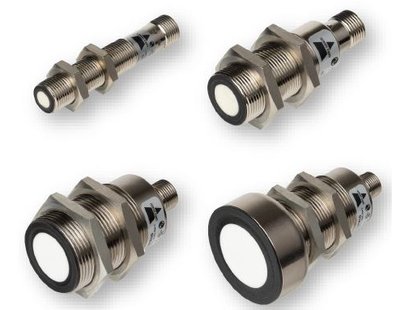
ultrasonic, UA12ASD, UA18ASD, UA30ASD
Metal ultrasonic sensors IO-LINK (analog & digital output). Sensing range: 20-200, 40-400, 80-800, 120-1.500, 300-3.000, 600-6.000 mm
Product Inquiry
Product Inquiry
DETAILED DESCRIPTION
Carlo Gavazzi UA12/18/30 Ultrasonic IO-Link sensors
This ultrasonic IO-Link sensor series of UA12, UA18 and UA30 provides superior sensing solutions with a good price-performance-ratio for a variety of industry applications. The ultrasonic sensors are excellent at contactless position and distance measurement and they are able to detect any target regardless of its colour, transparency or surface.
Because of their resistance to high and low temperatures and immunity against dust, steam and fumes, these Ultrasonic sensors are especially well suited to harsh environments.
The UA12, UA18 and UA30 come in a purely digital version and a combined version with one digital and one analog output.
Sensing distances go from 20 to 6000 mm and only plug versions are available.
Due to improved technology, an extended sensing distance and a reduced housing length, these sensors make for a state of the art sensor family with high accuracy, versatility and resilience!
Advantages of the new IO-LINK ultrasonic sensor series
-Extremely short design with high performance capacityand for applications with low space conditions
-Stable processes with very high resolution, reproducibility and low linearity error
-High stability thanks to low temperature drift, evenin an expanded temperature range up to 70°C
-Versatile usage thanks to the integration of 4 functions in a single sensor: Single point-, Window-, Two-point mode and Reflex operation
-Sensor-independent multiplex-operation to prevent sensors from influencing each other detecting odd objects (analog)
-Sensor-independent synchronization mode, for example, for thickness measurements or monitoring large areas (analog)
-IO-Link for easy commissioning and diagnostics
Multiplex mode (Analogue versions only)
In multiplex mode the sensors pulse sequentially (only one sensor is active at a time). This prevents mutual interference and allows the sensors to be mounted facing each other. In multiplex mode each sensor must complete the cycle of pulse and reception before the next sensor pulses. This setup eliminates the risk of interference from other sensors however the response time is slower.
Up to 10 identical sensors can be used for this function. It is configured via IO-Link, and requires each sensor to be assigned a role as either master or slave as well as being assigned a number in the network. The master sensor must have the highest number, and is the last to pulse if in multiplex mode.
Note: Look down at the ‘’Multiplex mode’’ photo
Synchronization mode (Analogue versions only)
In synchronous mode the sensors pulse simultaneously. This is useful when monitoring a larger area, or when several sensors are placed closely together to monitor the same surface. Synchronous mode has a faster response time than multiplex mode
Up to 10 identical sensors can be used for this function. It is configured via IO-Link, and requires each sensor to be assigned a role as either master or slave as well as being assigned a number in the network. The master sensor must have the highest number.
Note: Look down at the ‘Synchronization mode’’ photo
